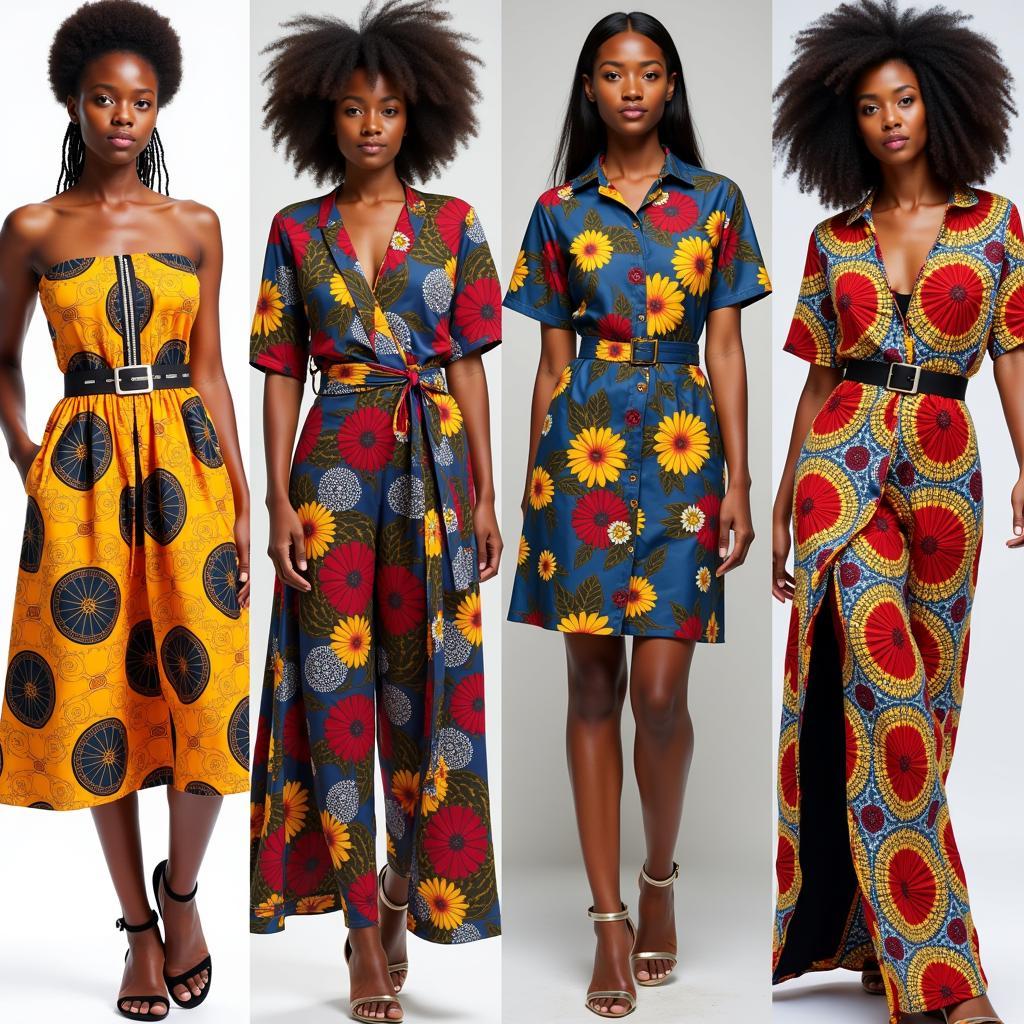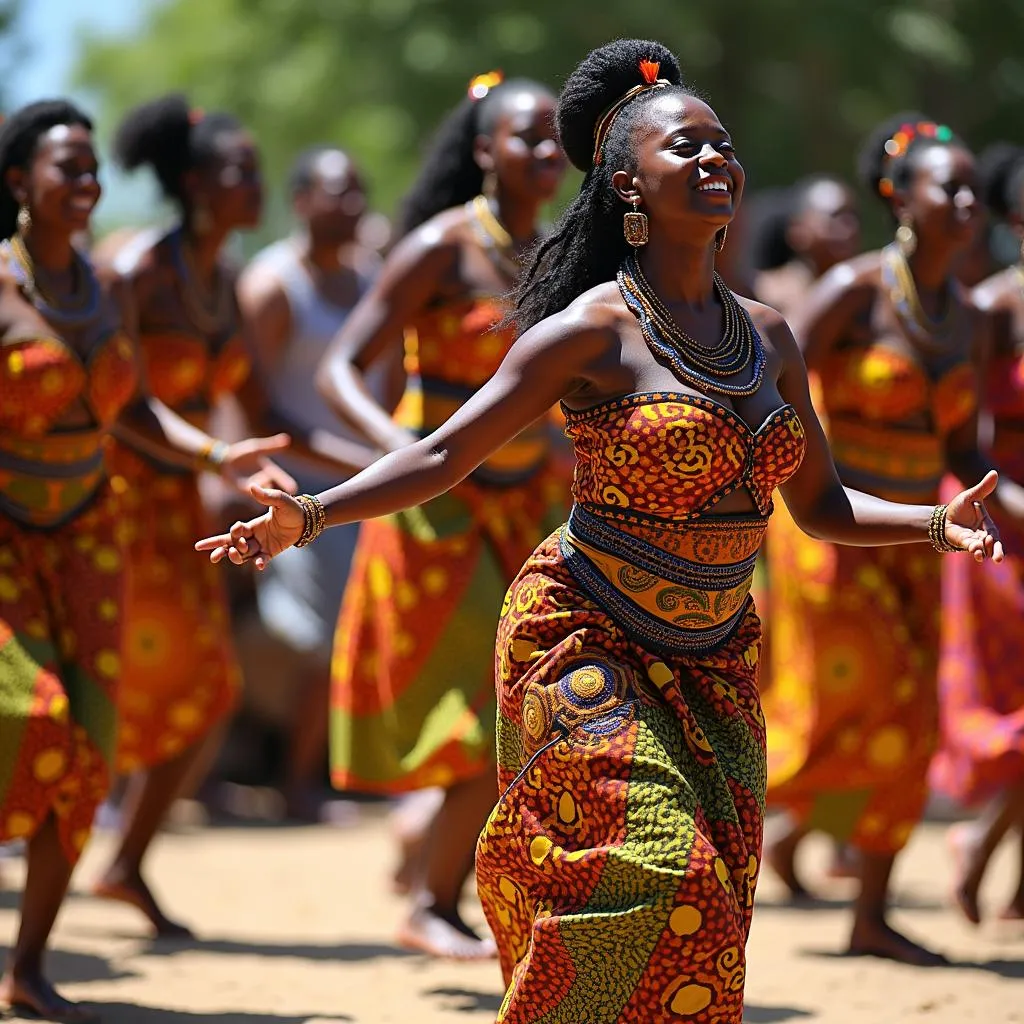Exploring the Vibrant World of African Attire Clothing
African Attire Clothing represents more than just garments; it’s a vibrant tapestry woven with history, culture, and artistry. From the intricate patterns of Kente cloth to the flowing elegance of a boubou, each piece tells a story, reflecting the diverse traditions and heritage of the African continent. This article delves into the captivating world of African attire, exploring its rich history, diverse styles, and the cultural significance it holds. After reading this, you might want to explore some african print dresses.
A Journey Through Time: The History of African Attire
African clothing has evolved over centuries, influenced by climate, social status, and cultural beliefs. Early forms of attire often utilized natural materials like animal hides and plant fibers. As societies developed, so did the craftsmanship and artistry of clothing production. Specific techniques like weaving, dyeing, and embroidery emerged, giving rise to distinctive regional styles. These traditional garments often served as symbols of identity, reflecting tribal affiliations, social standing, or spiritual beliefs.
The influence of trade and cultural exchange also shaped African attire. The introduction of new materials like silk and cotton from other parts of the world further enriched the textile traditions of the continent. Over time, these external influences blended seamlessly with existing practices, resulting in the diverse and dynamic array of African clothing styles we see today.
The Diversity of African Attire: A Continent of Styles
From the north to the south, east to west, African attire clothing showcases an incredible diversity of styles and influences. In North Africa, the flowing robes and intricate embroidery reflect the region’s Islamic heritage. West Africa is known for its vibrant, patterned fabrics like Kente and Ankara, used to create stunning garments like the boubou and dashiki. The bold colors and geometric designs of Southern African attire often tell stories of ancestral lineage and cultural pride. East African clothing traditions often feature intricate beadwork and vibrant colors, each with its own symbolic meaning.
Beyond Fashion: The Cultural Significance of African Clothing
African attire clothing transcends mere fashion; it’s a powerful expression of cultural identity, storytelling, and artistry. Each garment carries a unique significance, often symbolizing social status, marital status, or even spiritual beliefs. Certain colors and patterns hold specific meanings, communicating messages without words. For example, in some cultures, red represents power and strength, while white symbolizes purity and peace. The intricate patterns and motifs woven into fabrics often tell stories of ancestral lineage, historical events, or spiritual beliefs. The rich history and cultural significance of african kingdoms clothes should not be underestimated. You can also find some very interesting examples of african dolls south africa that showcase traditional clothing.
What are the key features of North African attire?
North African attire often features flowing robes, intricate embroidery, and head coverings, reflecting the region’s Islamic heritage.
How is West African attire characterized?
West African attire is known for vibrant, patterned fabrics like Kente and Ankara, used in garments like the boubou and dashiki.
What distinguishes East African attire?
East African clothing often includes intricate beadwork and vibrant colors, each with symbolic meaning.
What are the characteristics of Southern African attire?
Southern African attire is characterized by bold colors and geometric designs, often representing ancestral lineage and cultural pride.
The Modern Evolution of African Attire
Today, African attire is experiencing a global renaissance, influencing fashion trends worldwide. Designers are incorporating traditional African elements into contemporary designs, creating a fusion of old and new. From high-fashion runways to everyday street style, African prints and silhouettes are making a bold statement. This renewed interest in African attire is not only a celebration of fashion but also a recognition of the rich cultural heritage it represents. Consider some african inspired clothing mens for a unique and stylish wardrobe.
In conclusion, African attire clothing is a vibrant expression of a continent’s rich history, diverse cultures, and artistic ingenuity. From traditional garments steeped in symbolism to modern interpretations making waves in the global fashion scene, African attire continues to captivate and inspire. Exploring the world of African clothing is a journey into a world of beauty, tradition, and cultural significance.
FAQ
- What is the most popular African fabric? Ankara and Kente are among the most recognizable African fabrics.
- What is a dashiki? A dashiki is a colorful, loose-fitting garment originating from West Africa.
- Where can I buy authentic African attire? You can find authentic African attire online, in specialty stores, and from African designers.
- How can I incorporate African attire into my wardrobe? Start with small accessories or incorporate African prints into your existing style.
- What is the significance of headwraps in African culture? Headwraps hold various meanings depending on the culture, including marital status, social standing, and spiritual beliefs.
- Are there specific occasions for wearing traditional African attire? Traditional attire is often worn for weddings, funerals, festivals, and other important cultural events.
- How can I learn more about the history of African clothing? Numerous books, museums, and online resources offer information on the history and cultural significance of African clothing.
Need help with African attire clothing? Contact us at +255768904061, kaka.mag@gmail.com or visit us at Mbarali DC Mawindi, Kangaga, Tanzania. Our customer service team is available 24/7.


